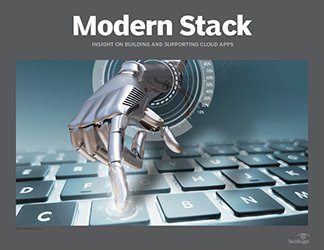PRO+ Premium Content/Modern Stack
Access your Pro+ Content below.
AI in software testing has arrived. Here's why robots rule.

This article is part of the Modern Stack issue of April 2018, Vol. 1, No. 1
Greg Sypolt, director of quality engineering at USA Today, has just two words for those skeptical about AI in software testing: It works. Using an AI-powered software testing platform, Sypolt's team slashed test times by 90%, tightened the continuous integration loop and managed to move user experience earlier in the development process. This is Sypolt's first foray into AI, and he's a convert -- so much so that he has a list of at least three more problems he'd like to see AI solve. At a time when the pressure to release software quickly matches the pressure from demanding and finicky consumers, the arrival of tools offering AI capabilities seems to promise sweet relief. Software testing, forever the stumbling block when it comes to continuous integration and delivery or DevOps, is particularly ripe for options that can speed up and declutter the process. Today, a handful of companies have added AI to software testing platforms, focusing on everything from user experience (UX) to change impact, defects management and ...
Features in this issue
-
AI in software testing has arrived. Here's why robots rule.
AI promises to make software testing faster and much more accurate. New tools are available, but it will take time for artificial intelligence to become ubiquitous in testing.
-
Which software engineer skills matter? All of them
The ongoing developer shortage means employers face unique challenges when it comes to hiring. LinkedIn's Sarah O'Brien offers insight into how developers behave and what they're really looking for.
Columns in this issue
-
Bots know better: Maybe AIOps tools should drive your stack
As more IT tool vendors add AI capabilities, organizations are speeding up delivery and cutting waste, but a lack of integration and trust is holding back the intelligent stack.
-
Serverless technology obfuscates workflows, performance data
Serverless and microservices reshape the application stack into something that looks like a swath of stars in the sky. How do you find a slow, misconfigured component in this interconnected galaxy?
